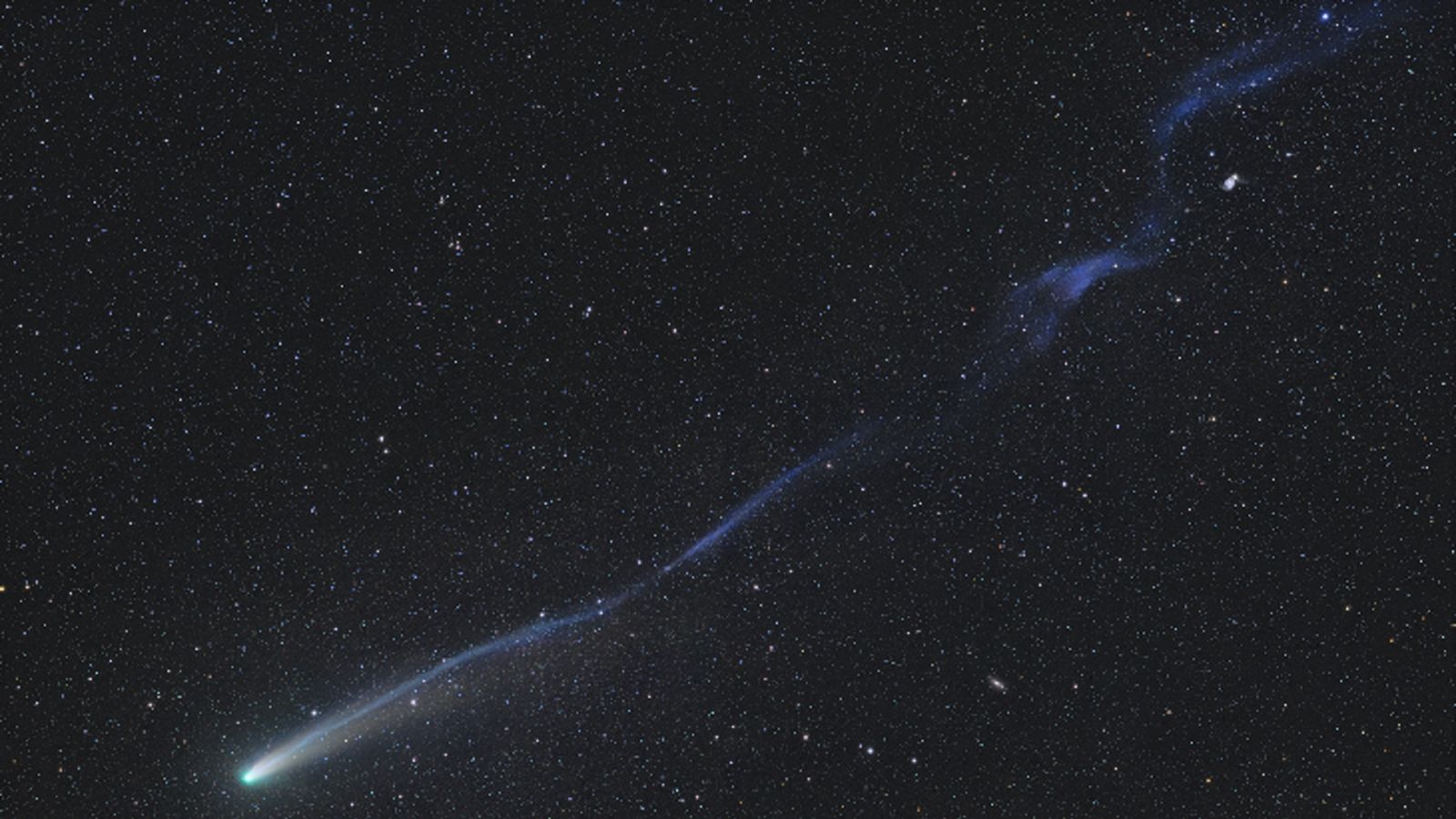A striking new photo of the superbright “Comet Lemmon” (C/2025 A6) shows the partial remains of its sizeable tail, shortly after the ethereal limb was temporarily torn apart by the sun. The cosmic shredding occurred just a few days before the comet is due to make its closest approach to Earth on Tuesday (Oct. 21).
Astrophotographer Petr Horálek captured the stunning shot from Lake Seč in Czechia (also known as the Czech Republic) in the late hours of Saturday (Oct. 18), according to Spaceweather.com. The original wide-field photo (see below) also features faint red-pink auroras that hung low in the night sky.
You may like
However, the CME did not shred the comet’s tail. Instead, the damage was likely caused by a strong gust of solar wind, which twisted and — at several points — completely disrupted the trail of gas and dust. This type of rippling along the tail is not uncommon among major comets, especially as they approach the sun. But the total separation of parts of the flowing limb, known as disconnection events, are much rarer.
This is not the first time that Lemmon’s tail has been battered by the sun. The tail was also wobbled by a strong solar gust in late September and experienced a minor disconnection event on Oct. 4, according to Live Science’s sister site Space.com. In each case, the comet’s tail likely returned to normal within a few hours of being disrupted.

The comet and its disrupted tail were snapped from the shores of Czechia’s Lake Seč. (Image credit: Petr Horálek)
Comet Lemmon was discovered earlier this year, on Jan. 3, by researchers at the Mt. Lemmon SkyCenter observatory in Arizona’s Santa Catalina Mountains. It is a nonperiodic comet that has likely orbited the sun every 1,350 years.
Lemmon will make its closest approach to Earth today (Tuesday, Oct. 21), when it will come within 56 million miles (90 million kilometers) of our planet, before reaching its closest point to the sun, or perihelion, on Nov. 8.

Comet Lemmon’s tail was also lightly buffeted by a gust of solar wind on Sept. 23. (Image credit: Chuck Ayoub/Wikimedia)
The comet has become much brighter in recent weeks as its increased proximity to the sun has caused the cloud of gas, ice and dust surrounding it — known as its coma — to expand. It currently has an apparent magnitude of 4, making it clearly visible to the naked eye.
People in the Northern Hemisphere can see the comet in the northwestern sky, located just below the Big Dipper, shortly after sunset. While visible to the naked eye, the best views will be achieved with a decent backyard telescope or a pair of stargazing binoculars. To capture the best possible photos of Lemmon, you can check out our comet photography guide.
Another bright comet, dubbed SWAN, also reached its closest point to Earth on Monday (Oct. 20) and is currently observable in the night sky not far from Lemmon. However, SWAN is not visible to the naked eye and can only be seen using stargazing equipment.

